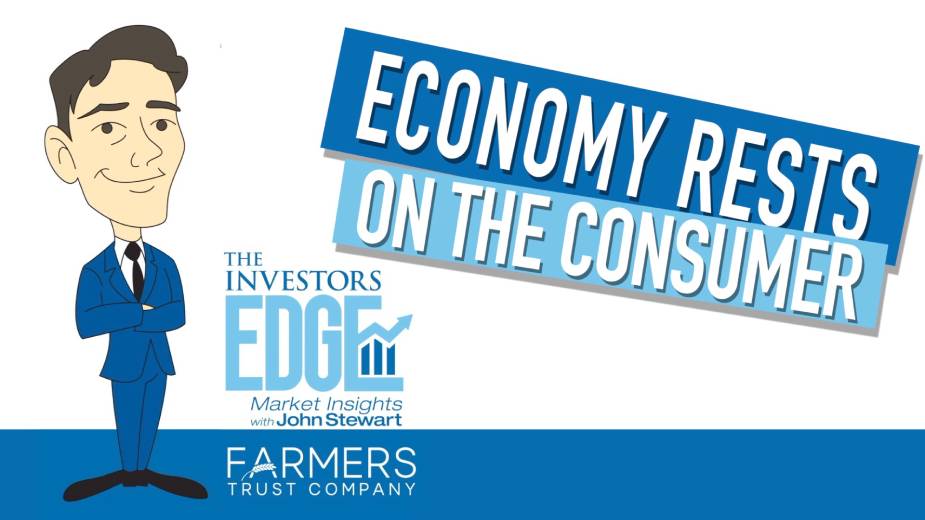Stocks Struggle to Start 2024 | The Investors Edge
By John Stewart, chief investment officer at Farmers Trust Co.
Week in Review: Stocks Struggle to Start 2024
Stocks stumbled a bit in the first few trading days of 2024, and the biggest losers so far this year have been the biggest winners of 2023. The tech-heavy NASDAQ was down around 3% this week, led by a decline of more than 5% for Apple, versus just over a 1% decline for the S&P 500 overall.
This actually makes a lot of sense. Investors were reluctant to sell their winners at the end of 2023, realizing capital gains that would have to be paid in April. By waiting until January 2nd, they pushed out the tax bill on any realized gains until April of 2025.
The question going forward is whether or not this is purely technical selling and some modest rebalancing and repositioning to start the new year – trimming some winners and adding to some underperformers – or is there a more durable market shift beginning to take place?
We do see the potential for some of the defensive areas of the market to continue to underperform given some softening economic data and the potential for further downside in earnings revisions for the next couple of quarters.
We’ll be keeping a close eye on the evolving economic and corporate landscape as we look for opportunities to get more aggressive on any meaningful market pullbacks going forward.
Featured Insight: Be a Contrarian
There is a lot of misunderstanding about what it means to be a contrarian when it comes to investing.
Most people believe that being a contrarian means that you fight the prevailing trend. If stocks are trending lower, you buy them, expecting them to reverse.
A much more sound investing strategy involves staying with a trend when the sentiment among market participants or the prevailing narrative runs counter to that trend.
There is currently a very strong consensus narrative that interest rates are likely to head lower in 2024. And indeed the Fed may cut the Fed Funds rate at least a couple of times this year. Nevertheless, longer-term interest rates could continue the trend higher they started back in 2020.
The market is not likely all that prepared for this possibility – so being a contrarian would mean being prepared for the risk that longer-term interest rates go significantly higher.
Looking Ahead: Another Earnings Season Looms
At the beginning of October, aggregate S&P 500 earnings for the fourth quarter were expected to eke out a growth rate versus the prior fourth quarter of a little more than one-half of one percent.
Currently, they are expected to decline by more than 3 percent. Nevertheless, analysts always give companies a relatively low bar to jump over – so it’s more likely they’ll actually be flat to slightly higher.
What’s really important though, as I’ve said many times before, is what happens to estimates for the current first quarter and second quarter of this year, to ultimately be reported on in April and July.
Currently, the first quarter is expected to be flat growth year-over-year, while the second quarter is expected to see 6% growth. Any hints in company reports that these estimates are too high could inject some serious volatility back into the stock market as the current “soft landing” narrative would be called into question.
Copyright 2024 The Business Journal, Youngstown, Ohio.


